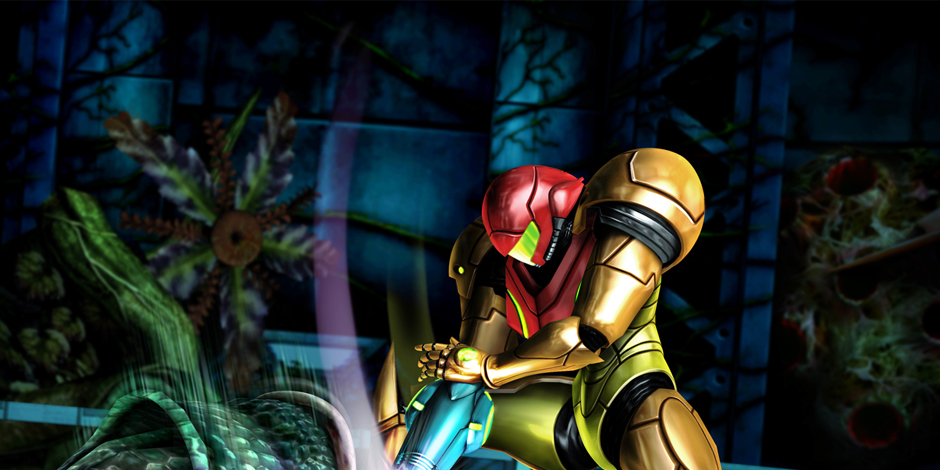Why you can trust 12DOVE
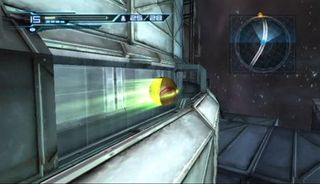
So the action falls short. At least there’s a solid Metroid experience underneath, right? Well, not entirely. The “figure it out yourself” gameplay that made the original games (and their Castlevania copycats) so successful has been jettisoned for something closer to 2002’s Metroid Fusion, where Samus is given orders and coordinates to follow. That means you’re moving from save point to save point, battling the same blah-y monsters and solving some admittedly challenging puzzles until the credits roll.
We don’t mind a more linear take, but Fusion did it better, with more colorful areas and a fearsome new foe right out of the gate. By comparison, Other M seems even more restrictive, forcing you down a path and frequently denying you access to the rest of the map. Backtracking became such a hassle that we actually stopped exploring the map for extra missile and energy tanks at one point, which has always been a hallmark of the series and one of the simple joys of playing Metroid games. Furthermore, you can refill your missile supply at any time by holding the Wii Remote vertically and pressing the A button. Not much point to hoard missile expansions if you can never really run out, is there?
This “keep going” attitude is in place to keep you moving forward rather than let you explore at your own pace, and is explained in the game by having Adam Malkovich as Samus’ commanding officer.
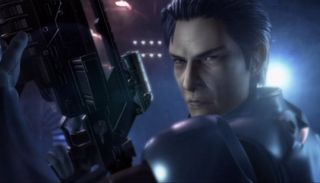
Above: Adam oversees the entire mission, opening and closing areas as well as authorizing which weapons Samus can use
You know how almost every Metroid game finds a way to take all of Samus’ powers away, just so you have to collect them all over again? This time around, Samus has all of her beams, missiles and various gadgets from the get-go. However, Adam runs the show, and doesn’t think Samus’ arsenal is necessary, so he only “authorizes” new weapons once a dire situation unfolds. So, even though you can plainly see a grapple beam location that would let you scale a sheer wall instantly, you can’t use it because Adam hasn’t cleared it. Nope, you gotta wait until one of his team members is being mauled before Adam says “oh hey, yeah you can use it now.”
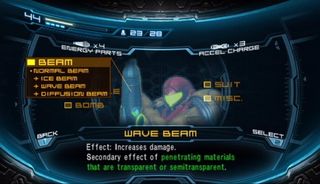
Above: Similarly, the classic Wave Beam isn’t “allowed” until Samus is pinned down by enemy fire
It sort of makes sense as a story element, but as a means of introducing new powers it’s a clear mistake. In other Metroid games we know Samus doesn’t even have a grapple beam, or an ice beam or whatever, so we have to find it and come back to the area that requires it. In Other M, we know Samus has all her powers and just isn’t using them, so when we’re reluctantly granted access to a new one, it’s more of a “finally!” than a “cool, new power!” moment. Contrived as it is, finding new powers in each game is still a ton of fun, even if the reasoning is always a little silly. At least it’s better than knowing you have everything at your disposal and can’t use it.
Earlier we talked about the first-person view, and how it’s ill-suited for the type of combat Other M employs. Turns out that the very same view works pretty well for the explorative bits of the game where you’re scanning a room for exits, items or clues to the story.
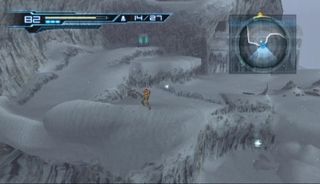
Above: The usual third-person view gives you a wide look at the map (and yes, the game is often this visually bland)
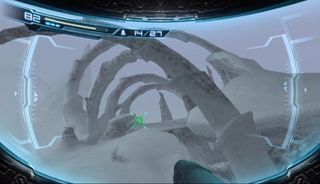
Above: That same spot, with the Wii Remote pointed at the screen. You can do this at any time, so it does make searching each room easier
It’s a little jarring and cumbersome to have to point the remote at the screen so often (even more so during a battle), but it’s not as awful as some may make it out to be. It seems like either Team Ninja or Nintendo felt Metroid Prime’s FPS influence and wanted to keep that aspect in, even if the core of the game was a third-person action title. But wait – there’s a third point of view too!
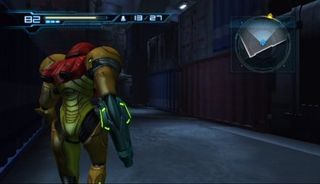
Above: Now we get a close-up over-the-shoulder shot!
At pre-determined points in the game, the camera will swoop in and present this tighter, meant-to-be-claustrophobic view. While here, you can’t run or fire. You can only walk, very slowly, until you reach whatever point the game is funneling you toward. As you might have guessed, Other M is never really scary, so the intention of this viewpoint is pretty much lost, plus it slows down the flow tremendously. Every time you see this view, you will immediately want it to be over, even if it does let you appreciate the detail on Samus’ armor.
Thankfully, once the end draws near and Adam has authorized your entire repertoire of abilities, everything from the combat to the exploration starts to feel more like a standard Metroid title. You’re allowed to explore the map freely, using the screw attack, grapple beam and all the other classic stuff to track down the remaining power-ups and access the many areas of the map that your plot-driven route didn’t cover. It’s sad that the best comes so late, but that also happens to be the case with the game’s story.
More info
| Genre | Action |
| Description | Starting a whole new chapter for Samus, this Metroid looks like it features first and third-person gameplay with some combo-heavy combat. |
| Franchise name | Metroid |
| UK franchise name | Metroid Prime |
| Platform | "Wii" |
| US censor rating | "Rating Pending" |
| UK censor rating | "Rating Pending" |
A fomer Executive Editor at GamesRadar, Brett also contributed content to many other Future gaming publications including Nintendo Power, PC Gamer and Official Xbox Magazine. Brett has worked at Capcom in several senior roles, is an experienced podcaster, and now works as a Senior Manager of Content Communications at PlayStation SIE.
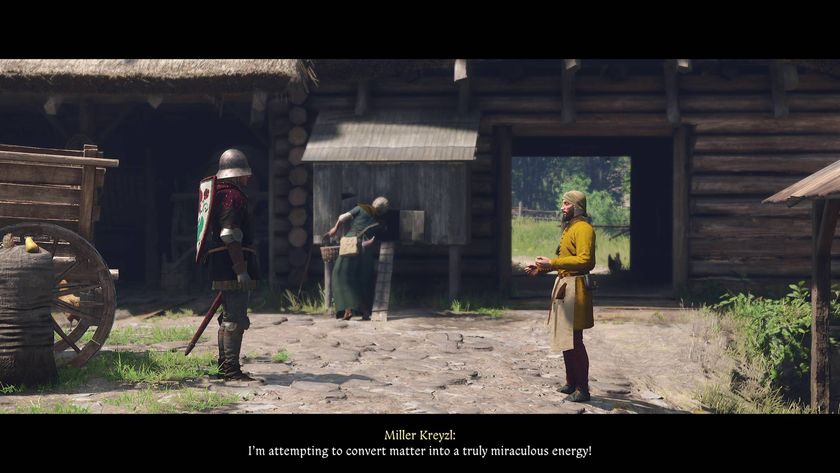
Kingdom Come Deliverance 2 Materia Prima walkthrough
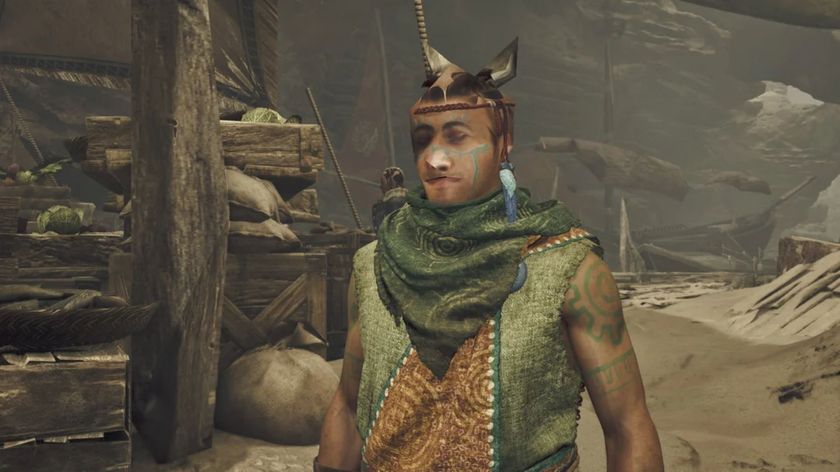
Monster Hunter Wilds' nightmarish low-poly bug is back for its second beta, but don't be too surprised - Capcom said improvements wouldn't show until launch

With fantastic pixel art animation and fiendish puzzles, Loco Motive proves the spirit of Monkey Island is still going strong
